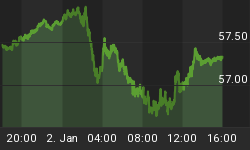This will be a very short remark, partly because I am certain that someone else must have observed this already.
The Dow Jones Industrial Average declined on Tuesday after having risen in each of the preceding 12 days. I was curious, and the DJIA has data going back more than a century (unlike, for example, the S&P 500, the Russell, or other indices), so I checked to see how often that has happened before.
It turns out that only three times before in history has the Dow advanced in 12 consecutive sessions. The dates of those occurrences are (listed is the last day of advance before the first decline):
July 8, 1929
December 7, 1970
January 20, 1987
The latter of these three was actually a 13-day advance, and the longest in history.
Now, the 1970 occurrence seems to be nothing special. It occurred five years into a 15-year period that saw the Dow go nowhere in nominal terms, but there was nothing special about 1971. However, anyone who invests in the stock market ought to know the significance of 1929 and 1987. It also bears noting that current market valuations are higher (in terms of the Cyclically-Adjusted PE ratio) than on any of those three days - quite a bit higher, in fact.
None of which is to say that we won't have another 10, 20, or 30-day streak ahead of us. I suspect the bulls will say "see? This same occurrence in 1929 and 1987 happened months before the denouement. We still have time to party!" And they may be right. This isn't predictive. But it, especially when compared to valuation levels second only to those seen at the peak of the "Internet Bubble," is ominous. This is a party I wouldn't mind missing.
P.S. Don't forget to buy my book! What's Wrong with Money: The Biggest Bubble of All. Thanks!
You can follow me @inflation_guy!
Enduring Investments is a registered investment adviser that specializes in solving inflation-related problems. Fill out the contact form at http://www.EnduringInvestments.com/contact and we will send you our latest Quarterly Inflation Outlook. And if you make sure to put your physical mailing address in the "comment" section of the contact form, we will also send you a copy of Michael Ashton's book "Maestro, My Ass!"
















